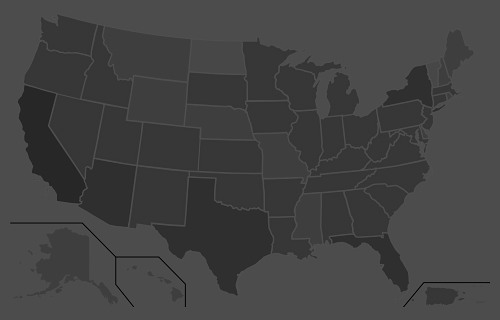“Our added winter moisture and active calling period led to a very long nesting and hatching season, starting in late April and extending into early summer, with chicks hatching as late as early July,” O’Dell said. “From a population standpoint, we are out of a deficit for the first time since 2001-2002. Quail are starting to pop up in places they haven’t been seen in a while.
“If you’ve never had the chance to experience what Arizona quail hunting built its name on, then this would be the year to get out and enjoy it.”
Meanwhile, hunters should note that the season for Mearns’ quail doesn’t begin until Dec. 4. It’s summer rainfall that plays a key role in nesting success and population numbers of this species. After a spotty and relatively weak monsoon across southern Arizona, these birds are likely to be abundant only in pockets that received sufficient precipitation this summer.
A valid Arizona hunting or combination hunt and fish license is required for all hunters 10 and older. Those hunters under 10 must either have a valid hunting or combination hunt and fish license, or be accompanied by an adult who possesses a valid hunting or combination hunt and fish license. Licenses can be purchased online or at license dealers statewide. A youth combination hunt and fish license (ages 10 to 17) is $5.
The general bag limit is 15 quail per day in the aggregate, of which no more than eight may be Mearns’ quail (when the Mearns’ season opens Dec. 4). The general possession limit is 45 quail in the aggregate after opening day, of which no more than 15 Gambel’s, scaled or California quail in the aggregate may be taken in any one day. After the opening of the Mearns’ season, the 45-quail possession limit may include 24 Mearns’ quail, of which no more than eight may be taken in any one day.
More quail-hunting information can be found on the department’s website at https://www.azgfd.com/Hunting/. Another resource for both new and experienced hunters alike is “An Introduction to Hunting Arizona’s Small Game.” Written by Randall D. Babb, the 196-page, full-color book covers where and how to hunt small game birds (like quail), squirrels, rabbits, ducks and geese. It also includes how to prepare and cook your harvest, with illustrations and recipes. The book can be ordered for $16.95 at www.azgfd.gov/publications.
Finally, hunters should check out O’Dell’s techniques for field-dressing quail at https://www.youtube.com/watch?v=3gRwZAcWzzk.
####
Publishers Notes: OUT OF STATE HUNTERS, FISHERMEN & OUTDOOR ENTHUSIASTS; Due to the Covid 19 pandemic, there could be limitations for OUT of STATE hunters, fishermen and other outdoor enthusiasts to include a 14-day quarantine requirement or negative COVID-19 testing alternative. Please check with the State's Department of Natural Resources BEFORE you travel or apply for the 2020 Fall Hunts.
Disclaimer: The views expressed on this site are that of the authors and not necessarily that of TBC Press
Minnesota 2022 Upper Red Lake Walleye Regulations when Season Opens May 14
Submitted by: TBC Press
Posted on: 05/04/22
The Backcountry Press
The country's premier daily HUNTING, FISHING & OUTDOOR news in the USA and around the globe. Read whats happening in your neck of the woods & beyond.
© 2020 TBC Press - All Rights Reserved Website Design by:
News # 14762
“We are happy that anglers will have the opportunity to harvest a few more and larger fish this summer,” said Edie Evarts, Bemidji area fisheries supervisor. “This is due to a combination of lower winter harvest and a desire to manage spawning stock at a level that stimulates recruitment of strong year classes.”
The Red Lake Nation and the Minnesota DNR manage walleye harvest on Red Lake under a joint harvest plan that the Red Lakes Fisheries Technical Committee revised in 2015.
The 2022-2023 winter harvest regulations will be determined after the summer fishing season and the completion of fall assessment netting.
An Upper Red Lake Citizen Advisory Committee reviews walleye harvest totals and regulation options and provides recommendations for the state waters of Upper Red Lake.
Conservation success story
Red Lake is a naturally productive walleye fishery but over harvest caused the walleye population to collapse in the 1990s.
In 1999, the DNR, the Red Lake Band of Chippewa and the Bureau of Indian Affairs agreed to a short-term stocking effort coupled with a harvest closure and aggressive enforcement. In 2006, the harvest fishery was reopened and has been managed successfully since that time. Upper Red Lake has become a top Minnesota fishing destination in summer and winter.
“We said it years ago and it’s worth repeating — Red Lake walleye fishing today represents a phenomenal conservation success story,” said Brad Parsons, Minnesota DNR’s Fisheries section chief. “We have many year classes of mature fish and consistent natural reproduction which enables us to manage this fishery for great fishing now and into the future.” Upper Red Lake fishing regulations are available on the Minnesota DNR fishing regulations page.
####
Anglers fishing during the 2022 open-water season that starts May 14 on Upper Red Lake in northern Minnesota will have a four-walleye possession limit, with only one walleye longer than 20 inches allowed, according to the Minnesota Department of Natural Resources.
Although angler activity was once again high last winter, harvest was modest at 134,000 pounds of walleye. Early winter fishing was very good, but heavy snow reduced anglers’ mobility and harvest in the later months.
Fall netting is used to assess the status of the walleye population and directly informs the pounds of walleye that can be sustainably harvested throughout the year — 2021 surveys found a robust population of walleye. The four-walleye possession limit, with one over 20-inch size restriction, is intended to keep total annual harvest within the target harvest range of 240,000 to 336,000 pounds. The 2021 open water regulation was a three-walleye limit with one over 17 inches allowed.












